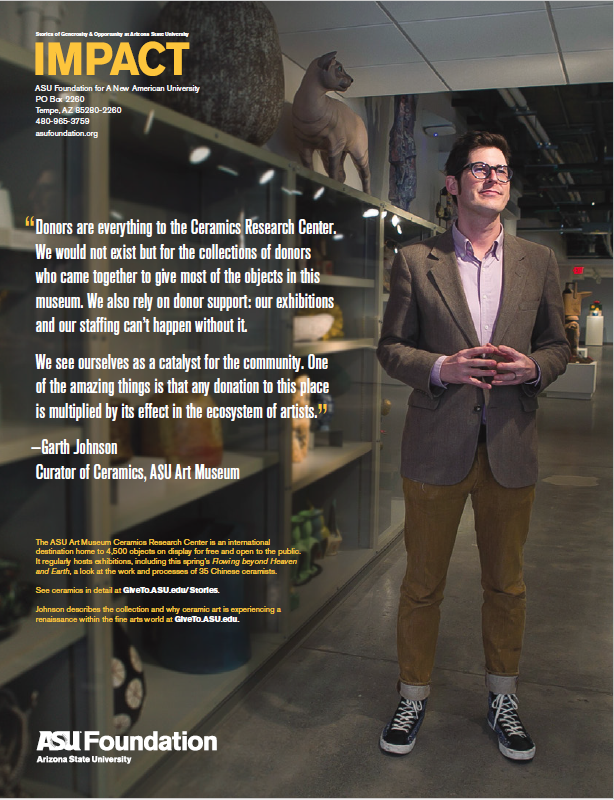Sit. Stay. Heal.
The offices of many academics feature floor-to-ceiling bookshelves, but Clive Wynne may be unique in having a plush border collie riding a skateboard atop his.
The stuffed dog, part of a presentation Wynne gave shortly after joining Arizona State University in 2013, is one of many animals playing a role in the professor of psychology’s career in animal behavior and cognition.
“It is both fascinating and fun,” said Wynne, director of ASU’s Canine Science Collaboratory. “For me, it’s fun with consequences. You can have a great time—yes, I cuddle puppies—but it really does matter.”
Wynne’s team of researchers studies aspects of the humandog relationship where there are high stakes—for dogs, for people, or for both. Current projects range from the effect of aging on canine memory to the bond formed when dog adopters exercise with their new pets to how dogs detect different odors.
An ongoing collaboratory investigation considers the welfare of shelter dogs and ways to increase their chances of being adopted.
Each year, some four million dogs enter shelters in the United States; at least a quarter of them face euthanasia if a new home for them cannot be found. As Wynne’s team discovered, a contributing factor to a dog’s likelihood of adoption is its breed label—and the perceptions that come with it.
With support from Mars Veterinary, Wynne’s team acquired 2,000 DNA tests to trace dogs’ heritage as far back as eight generations. The tests revealed a shelter dog’s breed is often mischaracterized—unsurprising because there are more than 200 known purebred dogs, and most shelter dogs are of mixed descent.
MAN’S BEST FRIEND: TWO WAYS DOG STUDIES HELP HUMANS
1. Sniffing out danger, saving lives: Defense research agencies have spent billions of dollars developing specialized tools to detect bombs, but those devices can fall short compared to the natural sensitivity of a dog’s nose. ASU’s Canine Collaboratory, with support from the U.S. Office of Naval Research and British Science and Technology Laboratory, is teaching dogs to identify bomb-making ingredients and to sniff out Improvised Explosive Devices to protect soldiers and civilians.
2. Old dogs teaching new research tricks: Dogs are one of the few species aside from humans that share vulnerability to dementia and develop a disease similar to Alzheimer’s. Because dogs’ average lifespans are shorter than humans’, ASU scientists are able to perceive and treat the disease’s progression in dogs in a condensed period of time. The research, which is supported in part by the College of Liberal Arts and Sciences, is accelerating understanding of effective therapies for both species.
Accurately identifying a dog’s ancestry allows caretakers to better predict health issues and provide appropriate treatment, and it gives potential owners a more complete picture of the pet they adopt.
“The ‘bully breeds’ get the rough shake for adoption to the point where a label of ‘pit bull’ can double one’s adoption time,” said Arizona Animal Welfare League marketing and communications manager Michael Morefield, referring to a term that encompasses twenty-five recognized breeds. “Because of the research Clive Wynne’s postdoctoral student Lisa Gunter worked on here, we eliminated all breeds from our kennel cards. If someone has a question, we don’t hide it—we talk about it, but we don’t want those initial impressions or stereotypes applied to an individual dog.”
Morefield said an owner doesn’t fall in love with a “German shepherd” or a “terrier,” he or she falls in love with a particular dog with individual experiences and personality, which is why getting to know an animal leads to more successful adoptions than basing the decision on breed assignment—an outcome that not only improves dogs’ wellbeing but benefits their human caretakers.
“To know more is rich, and it makes our lives with dogs richer,” said Wynne. “There is so much we could know. But it’s not just for fun—it actually matters. We could help. And dogs can help us.”







